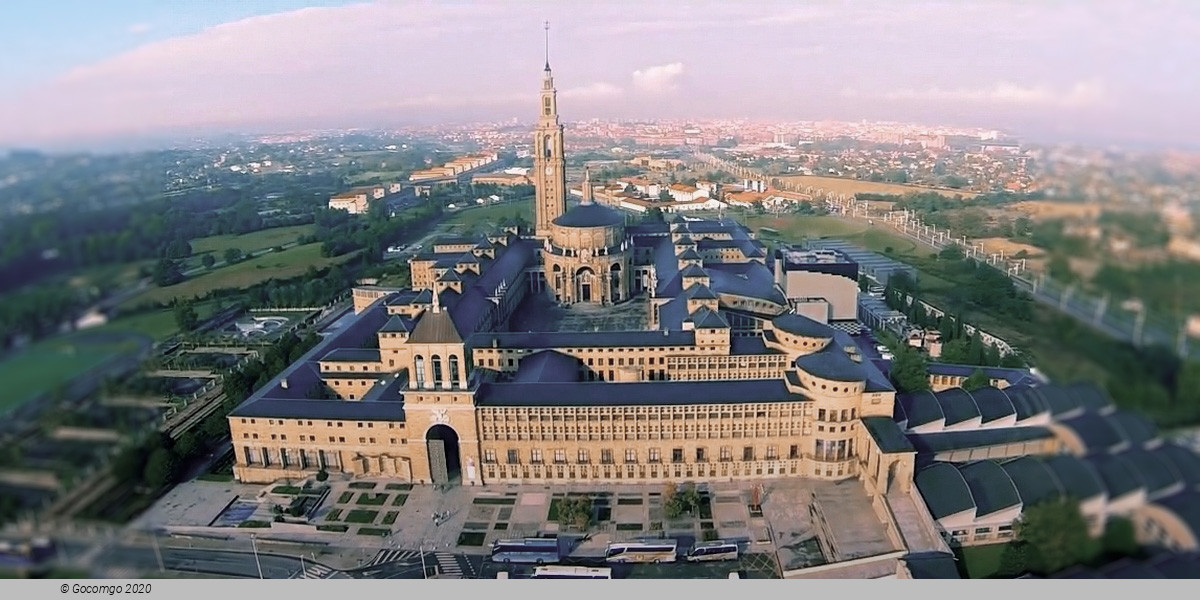Gijon

Gijón or Xixón is a city in north-western Spain. It is the largest city and municipality by population in the autonomous community of Asturias. It is located on the coast of the Cantabrian Sea in the Bay of Biscay, in the central-northern part of Asturias; it is approximately 24 km (15 mi) north-east of Oviedo, the capital of Asturias, and 26 km from Avilés. With a population of 271,780, Gijón is the 15th largest city in Spain.
History
Prehistory and Romanization
The first evidence of the human presence in what is known nowadays as the municipality of Gijón is located on Monte Deva, where there exists a series of tumulus, and on Monte Areo, where there are some neolithic dolmens. These dolmens were discovered in 1990 and were supposedly built around 5000 BC.
The first noticed settlement (Noega) is located in Campa Torres. It has its origin between the 6th and 5th centuries BC. It was populated by Astures (Cilúrnigos) and later Romanized. Noega was progressively abandoned when the Roman wall in the peninsula of Cimavilla, called the Gegionem, was built.
Middle Ages and Modern Era
The invasions of barbarian tribes in the 5th and 6th centuries left no traces. The region submitted to the power of the Visigoth king Sisebut in the 7th century. This period marks the beginnings of Christianization, one of the first Christian worshipping places being the Roman villa of Veranes.
Gijón was the capital of the Muslim territories on the Cantabric Sea, under the power of Munuza, for a short period between 713 and 718 or 722. In 722 the Asturians won the Battle of Covadonga which is regarded as the beginning of the Reconquista. The Asturian forces were led by Pelagius, who would become the first king of the Kingdom of Asturias.
Until 1270 there were no reliable references to Gijón as a settlement, with only short mentions in some documents. In this year, Alfonso X of Castile gave it the status of puebla. This documentation appears in the Monastery of San Vicente de Oviedo.
In the 14th century, the war between Alfonso Enríquez, Count of Gijón and Noreña and Henry III of Castile ended when the village of Gijón was burned and totally destroyed, practically disappearing. In the 15th and 16th centuries, Gijón reemerged. A new dock was built in the port adding fishing and commerce to the area. In the 17th and 18th centuries, Gijón began to develop rapidly, growing out of the old city centre, supported by the commercial links between the port of Gijón and the American colonies. In the 18th century, due to the French invasions, the wars and the financial trouble in the era, the development stopped until late in the century, when the Oviedo-Gijón road was created and the port was recognized as the best one in Asturias, favouring the start of industrial activities in the town.
Contemporary history
The 19th century brought with it great development, with the commerce of coal, the Gijón–León road and later the Langreo–Gijón railway. All this contributed to the quick expansion of the port since the intensity of the traffic overflowed the port. A new port, El Musel, was built in 1893 and it was the first coal port of the peninsula.
Gijón was going through a conversion to an industrial town with a new bourgeois and an urban development, opening new streets and squares, with new municipal types of equipment like water, garbage collection, lighting, and so on. All this industrial development brought new manpower to the city and the creation of new neighbourhoods like Natahoyo, La Calzada, Tremañes or El Humedal.
In the 20th century, with the Spanish Civil War, the city supported the Republican faction. The army was located in El Coto. The resistance was eliminated in August 1936. Later, the village was the capital of the Sovereign Council of Asturias and León until 20 October 1937, when the troops of General Francisco Franco occupied the city.
Iron manufacture was the main industry of Gijón from the last years of the 19th century until the last decades of the 20th. Uninsa was created in 1971, and it merged with Ensidesa. In the last years of the century was converted in Aceralia, and integrated into Arcelor, along with the Luxembourg-based Arbed and the French company Usinor.
The last decades of the century brought an industrial crisis affecting mainly iron manufacture and local shipbuilding. This brought new terrain for the creation of new beaches, parks and neighbourhoods. It was also created a campus of the University of Oviedo.

